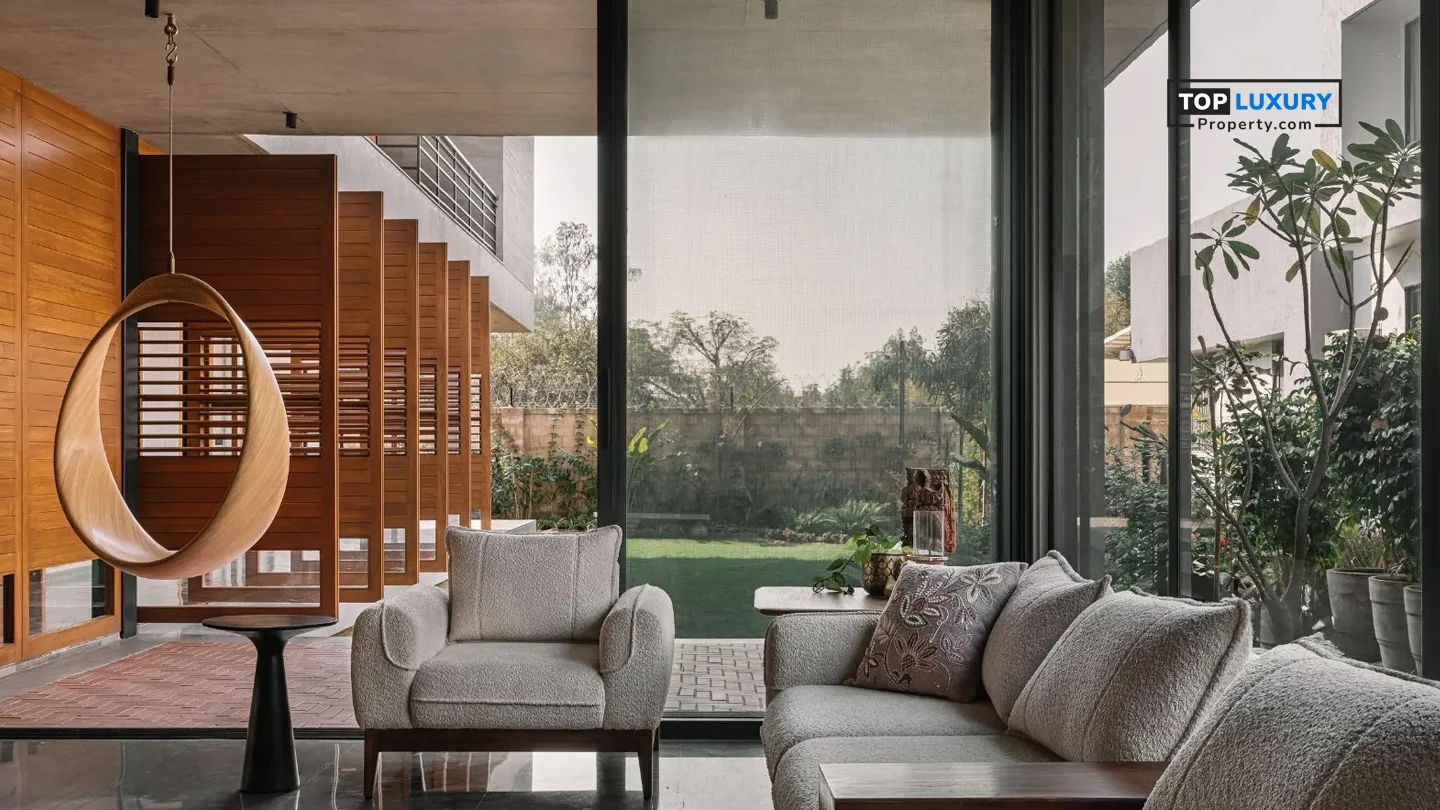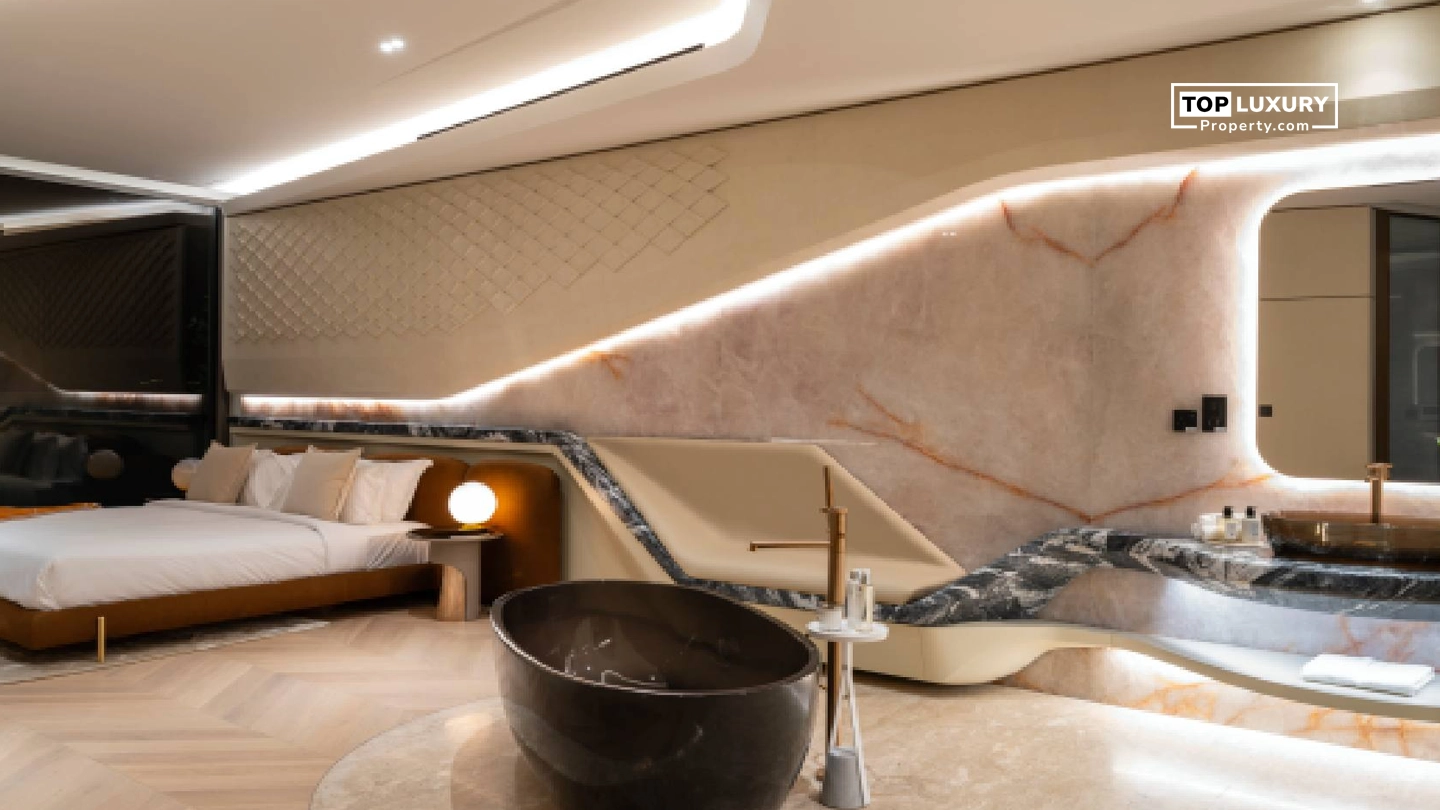The Vastu Shastra is being identified as the ancient Indian science of architecture and spatial harmony, it consists of long fascinated homeowners, architects as well as spiritual seekers. The core principles of Vastu aims to balance out energies within the space, but the rise of modern day rumors and misinterpretations has just shifted the focus from its true essence.
This article has provided a detailed analysis of Vastu Truths that differentiate facts from myths and help our readers to approach the ancient wisdom with clarity and practical understanding.
Understanding Vastu Shastra: Core Principles Unveiled
Vastu Shastra is being identified fundamentally about making sure that the spaces are aligned with the earth’s, water’s, fire’s, air’s and space’s natural forces. Vastu Shastra draws from ancient works, specifically the Vedas, and provides guidance on spatial organization, orientation of rooms/space, and material choices in order to create and maintain positive energy for well being. Some of the facts about Vastu Shastra:
- Elemental Balance: Vastu focuses on balance across five elements (Panchtattvas).
- Directional Value: Each direction provides significance regarding an element and an energy. For example, the northeast relates to water and clarity, while the southeast relates to fire.
- Space Management: Vastu is about common sense when working with space—in the southeast of a home (for example) a kitchen makes sense (fire) and in the southwest the bedrooms (less activity, earth for solid).
- Ventilation and Light: It coincides with modern construction and architecture which is being focused on health.
Common Vastu Myths and Their Origins
There are many Vastu myths perpetuated by hearsay, superstition, and intertwining religious customs with design Reason. Consider the following commonly believed but false assertions:
Non-Vastu homes bring bad luck: Many think that homes that are not Vastu-compliant create misfortune. Discomfort can stem from poor design, not Vastu violations.
Only east-facing homes are lucky: This idea started with the general benefits of enjoying morning sunlight, but it doesn’t have a rigid Vastu basis. Any direction can be lucky if wisely planned.
Mirrors should never face beds: Although this is often a repeated tagline, the logic being applied is more related to psychological discomfort than actually disrupting energy.
Toilets bring negative energy, no matter where they are located: This thought originated from hygienic factors long ago, not from any spiritual criteria.
The root cause of this Vastu Misconceptions usually stems from misunderstandings of ancient rules, unsuitable in a modern context.
The Science Behind Vastu: Fact or Fiction?
Vastu is not a science in the way the modern empirical paradigm defines science, but there are rational design attributes that fit the parameters of nature and psyche that are plentiful in Vastu for home design.
Light and Sun: Vastu advocates consider eastern light exposure in kitchens or front entrances as a way to enrich management with natural sunlight that is actually known to have health benefits.
Ventilation: Vastu favors cross ventilation and its two-prong purpose of allowing airflow while keeping humidity down both promote physical wellness.
Energy Flow and Clutter: The notion of energy being stagnant due to clutter is similar to modern theories on psychological wellness.
Nonetheless, the facts of Vastu Shastra should not be confused with facts that translate to scientifically provable rules. While many aspects of Vastu Rumors do have aspects with advantages in life, there are other areas that lack any scientific metrics and they instead engage in symbolism or psychological significance.
Vastu for Homes: Practical Tips vs Superstitions
Understanding what advice to take seriously and what to disregard as superstition is essential for effective Vastu implementation.
Vastu Tips that you should follow:
Remember to keep the northeast corner clear and clean to help clear your mind.
Use daylight and cross ventilation in order to create the best energy flow.
Place the kitchen in the southeast direction following the direction of fire.
Use earthy tones in the southwest to create a connection to the ground in the southwest.
Vastu Beliefs to ignore:
Sometimes never placing a bed under a beam, unless you care about comfort.
Using lemon-chili charms on entrances for protection.
Never use black paint.
The Vastu reality is to enhance functionality and comfort through conscious design, not design based on fear. But before that, you must know about the basic Vastu of your home. For this, we have written a dedicated blog on How Do I Check The Vastu of My House?, so you can easily assess your home’s Vastu by yourself.
Debunking Vastu Misconceptions About Directions
Vastu misconceptions mostly center on directions, including do’s and don’ts, but most are not based on grounded logic.
| Myth | Truth |
|---|---|
| South facing homes are unlucky. | Any direction can be lucky if they are planned and placed correctly |
| You have to be open to the north. | Yes, when you are open to the north, you had better indirect light, but it is a guideline, not a requirement. |
| To be unlucky, put a safe in the south. | Safes are typically put in the south wall facing north, but financial success depends on your effective management of money, not where in a wall you put a safe. |
The ground rules for direction have variables that need to be addressed relative to context, which means factors like floor plans, local area, and lifestyle can alter how you might apply it.
Vastu and Energy Flow: What’s Real & What’s Not
One of the very basic principles of Vastu is to promote free flowing energy through the house; however, good energy flow is often a vague and misunderstood term.
| What’s True | What’s not true |
|---|---|
| Free flowing air and light contribute to open and positive feelings of space | Expecting that energy might be stuck in the corners of rooms if a special object is not placed there. |
| Less clutter equals clearer minds and less stress. | Expecting that simply placing an object in an unproductive place will automatically bring in negativity. |
| Flow between spaces allows for comfort and function. | Vastu is a religious practice associated with hinduism. |
In Vastu, good energy flow describes the fluidity of space and psychological comfort. It’s not some magical force; it is a way to describe how a space “feels” and functions.
The Role of Colors in Vastu: Truths and Exaggerations
Color provides psychological stimulus, which is where some truths come from the Vastu color guide; but the truths are also often wildly exaggerated.
| Truths | Exaggerations |
|---|---|
| Blue and green are calming colors and great for bedrooms or meditative spaces. | Fearing that black attracts evil black is just a strong color that needs to be carefully considered and appropriately placed. |
| Red and orange energize and should be placed in kitchens or dining areas. | Assuming one colour can change the energy in a space. |
| Yellow is uplifting and appropriate for study spaces. | Excessive use of Yellow in a study space leads to mental clarity, good score and optimism. |
Vastu Remedies: Effective Solutions or Placebo Effects?
The market is saturated with Vastu remedies ranging from pyramids and crystals to yantras and salt bowls. But, do they really work? Some of the likely reasons to work are:
- Many remedies work by placebo effects, providing assurance, comfort and confidence.
- Some, like decluttering or changing furniture positioning, can lead to more practical changes.
- Some remedies are symbolic, providing a mental trigger for something that you are looking to change or adopt.
But, by no means, use remedies that require that you suspend logic and blind belief or remedies that prey on your fears. Use and share solutions with structure and intention, not gimmicks.
Modern Vastu: Adapting Ancient Wisdom to Today’s Homes
In today’s modern houses, specifically apartments and urban layouts are not able to follow traditional Vastu layouts. This does not mean that the Vastu could not be applied, it just needs to be evolved. In order to adapt Vastu Practically consider the following:
- If the northeast is compromised, use mirrors and lighting to invoke a sense of space.
- Use maneuvered activities, as opposed to rooms (for example, if the kitchen is not present, turn on a lamp in the southeast).
- Follow typical practices to be neat, orderly, and include the natural (plants, and some air).
Modern Vastu is about intention, is embracing of your needs, and gives a sense of balance to your journey without compromising it drastically.
Expert Insights: Separating Vastu Facts from Popular Rumors
The experts in architecture and energy design suggest that the Vastu Truths are more about environmental psychology and lifestyle design rather than just superstition. Some of the Expert Takeaways on Vastu facts are:
- Use Vastu as a guideline not as a rulebook.
- Combine vastu with the modern principles and sustainability.
- Do not rely on fear based solutions, always question and research accordingly.
- If among the Vastu Shastra facts something does not make logical or emotional sense for you, you can discard or adjust it accordingly.
It is always advisable to consult with professionals who have a balanced, scientific and practical approach towards Vastu, not with the ones who thrive on selling fear or artifacts.
Conclusion
The truth relating to Vastu lies in balance not in blind belief. Some of the principles offer timeless guidance on layout, harmony, light whereas some of them are often being misunderstood. In order to get the true benefits from the Vastu Shastra Facts, you are required to focus majorly on practicality, purpose and peace of mind and not on the myths and superstitions. Let Vastu Shastra act as a tool that would enhance your living space, not the tool which will control it.





_(2)_638647637563832478_820465_.webp)
